Purchasing a home can be an exciting adventure, but securing a home loan may appear complicated. Knowing what a home loan is and its mechanics is beneficial for first-time buyers and those considering refinancing. This guide will outline the fundamentals of home loans, including down payment details and the impact of interest rates on your payments. Let’s clarify the process and assist you in making informed decisions for your future home.
Understanding Home Loans
When looking at home loans, individuals should assess their eligibility, the necessary down payments, and monthly payment options. Loans can vary widely, including FHA loans that permit 3.5% down or VA loans for qualifying military members that might not require any down payment. Understanding terms, like fixed interest rates or adjustable-rate mortgages, is important for making educated decisions about possible monthly payments and interest savings.
For example, a 30-year fixed loan typically offers lower monthly payments, whereas shorter terms may lead to higher payments but reduced interest in total. To get ready to apply, potential homebuyers should secure a certificate of eligibility (COE) if it applies, be aware of their income level, and understand their credit profile. Consulting a lender and exploring options like IRRRL or home equity loans can provide insights into refinancing for improved terms down the line.
There are also specialized housing grants for those requiring particular assistance, making home buying more affordable for a range of needs.
Types of Home Loans
Conventional Loans
Conventional loans are home loans that are not supported by a government agency, such as the Federal Housing Administration or the U.S. Department of Veterans Affairs. They commonly feature a fixed interest rate, which makes them appealing for homeowners.
Typically, borrowers need a certificate of eligibility and a satisfactory credit profile. While some lenders may allow down payments as low as 3%, most conventional loans prefer 5% down. This is different from FHA loans, which usually require 3.5% down, and VA loans, which might permit no down payment for eligible military service members. A conventional loan can provide more affordable options over time with lower monthly payments, potentially leading to savings on interest in comparison to other loans. For refinancing, options such as the Interest Rate Reduction Refinance Loan (IRRRL) offer a method for obtaining a lower interest rate.
FHA Loans
FHA loans provide more opportunities for individuals seeking to purchase a home. They typically require a lower down payment of just 3.5%, which is less than what many conventional loans demand. This accessibility can benefit first-time homeowners in their buying process. To qualify, borrowers need to meet the credit score criteria set by the lender and present proof of income via a Certificate of Eligibility.
For those with less-than-perfect credit, FHA loans may still be an option because of the Federal Housing Administration’s support. Many borrowers appreciate these loans for their reduced mortgage insurance expenses, which can lead to significant savings on interest. Some individuals may opt for FHA loans instead of VA loans, which are also well-regarded among eligible military members and offer the advantage of no down payment. Borrowers exploring options such as IRRRLs can refinance their FHA loan, potentially decreasing their monthly payments.
VA Loans
VA loans provide several advantages compared to traditional home loans. Eligible military members and veterans can purchase homes without a down payment, unlike FHA loans that require at least 3.5% down or conventional loans that typically need 3% or 5% down. This increases affordability for first-time homebuyers. VA loans generally offer lower interest rates, resulting in smaller monthly payments or reduced interest over the loan’s duration.
Veterans must obtain a Certificate of Eligibility to confirm their eligibility, which can be acquired through a lender or the Veterans Affairs website, often more swiftly than with conventional loans. Furthermore, VA loans do not need private mortgage insurance, providing further financial relief to borrowers.
Additionally, VA presents options like the Interest Rate Reduction Refinance Loan , simplifying the refinancing process for current VA loan holders. These features support veterans in acquiring homes while minimizing interest and managing costs. Adapted housing grants are also available for individuals with disabilities.
USDA Loans
To qualify for a USDA loan, borrowers must meet specific criteria, including an adequate income level based on their household size and location. This ensures that the program supports those who need assistance. Borrowers are required to have a valid Certificate of Eligibility that verifies their eligibility. USDA loans differ from other loans as they are designed for rural homebuyers and offer advantages like no down payment, making homeownership more attainable.
For individuals with a lower credit profile, the potential for saving on interest is considerable, since USDA loans tend to have fixed interest rates that are lower than those of conventional loans. Unlike FHA loans, which necessitate a 3.5% down payment, USDA loans may allow qualified military service members to purchase a home with no down payment, enhancing accessibility to homeownership.
The IRRRL program also provides residents refinancing options for lower monthly payments, and with benefits such as reduced mortgage insurance, USDA loans remain a favorable option for purchasing manufactured homes or achieving lower monthly payments on larger loan amounts.
Key Terms in Home Loans
Principal
The principal in a home loan refers to the amount borrowed, which significantly influences the total cost over time. A larger principal results in more interest paid overall, affecting how much homeowners can save. For instance, when a homeowner secures a VA loan, the principal amount directly impacts monthly payments. A loan of $300,000 requires larger monthly payments compared to a $200,000 loan, leading to a difference in interest accumulation.
Borrowers might explore options like adjustable-rate mortgages for lower initial payments but potentially higher payments later on. To reduce the principal more quickly, homeowners can make extra payments, refinance using options like an Interest Rate Reduction Refinance Loan , or obtain a home equity loan to access cash. In some circumstances, a 5% down payment on an FHA loan or even lower down payment options can lead to increased affordability.
By actively managing the principal, eligible military members can minimize interest overthe life of the loan, resulting in lower monthly payments over time.
Interest Rate
The interest rate on home loans can be influenced by several factors, including an individual’s credit profile and the type of loan they choose.
For example, veterans looking to buy a home may benefit from VA loans, which often have competitive rates, allowing for 0% or 5% down payments. A borrower with a stronger credit score typically qualifies for a lower interest rate, which means they pay less interest overall. If a homeowner secures a fixed interest rate on a popular loan such as a 30-year fixed, their payments remain steady. However, those choosing an adjustable-rate mortgage may see their rates change, possibly leading to higher monthly payments over time. This difference can be significant if they want to refinance using an Interest Rate Reduction Refinance Loan later for better rates.
Loan Term
When deciding on the best loan term for a home loan, individuals should consider their income, loan eligibility, and credit profile. A popular option is a 30-year fixed loan, which typically offers lower monthly payments but leads to higher total interest paid. A shorter term, such as a 15-year fixed loan, results in higher monthly payments but less interest paid overall since the loan is paid off more quickly.
For those eligible for VA loans, options like the Interest Rate Reduction Refinance Loan can help save on interest if borrowing again. Individuals might also explore FHA loans, which may require as little as 3.5% down, or even 3% down options in some situations. Changing the term can also affect private mortgage insurance costs, impacting overall affordability. Home equity loans are another way to access cash for expenses, but this can vary by lender. Therefore, weighing factors like payment size against total interest over the life of the loan is important.
Down Payment
When deciding how much to put down on a home, buyers should take into account their income, credit history, and loan eligibility criteria.
For example, a lender might require a certificate of eligibility for VA loans, which allow approved veterans to buy a home with no down payment. On the other hand, FHA loans usually need 3.5% down, while conventional loans can begin at 3% or up to 5%. A higher down payment often results in reduced monthly payments and overall interest costs. For instance, contributing 20% can decrease mortgage insurance expenses, making the loan more manageable. Typical sources for down payment funds include savings, family gifts, and specific grants like adapted housing assistance for veterans. Borrowers might also look into refinancing options such as IRRRL to obtain cash for a down payment or to decrease their interest rate on current loans.
Grasping these factors can assist buyers in making well-informed decisions when purchasing or refinancing a home, which could lead to savings on interest over the term of their loan.
Home Loan Application Process
Gather Necessary Documents
To apply for a home loan, an applicant needs to collect several necessary documents. They must include proof of income, such as pay stubs and tax returns, to demonstrate their financial situation to the lender. A Certificate of Eligibility is required for veterans applying for a VA loan to confirm their military service. To ensure all documents are accurate and current, the applicant should review them carefully and request updated information if needed.
Depending on the loan type, such as an FHA loan, additional papers may be required.
For example, applicants with lower credit profiles might need to show proof of assets or savings. If applying for a refinance loan, having documents related to the current mortgage, like the loan amount and terms, is also helpful. If they’re buying a manufactured home or large property, knowing about specific programs, like reduced mortgage insurance or adapted housing grants, is beneficial. Being careful to gather the right papers helps make the process smoother, whether it’s for the popular 30-year fixed loan or a shorter-term option.
Submit Loan Application
When submitting a loan application, the applicant needs to provide details about their income, credit profile, and any documentation like the Certificate of Eligibility for VA loans. This ensures they meet eligibility requirements for loans, such as FHA loans, which may allow 3.5% down, or VA loans, which might offer 0% down for eligible military service members.
To confirm their application is complete, the applicant should review all sections carefully and check if they’ve included necessary paperwork, such as proof of income or additional documentation for specialized programs like adapted housing grants. After submission, the applicant may expect the lender to review the loan application and conduct a credit check. This could lead to options like refinancing into a lower interest rate or exploring different mortgage types, such as a 30-year fixed or 15-year fixed rate.
Depending on their financial situation, they may receive offers for popular loans or be prompted to discussoptions for getting cash out through a home equity loan or adjustable-rate mortgage.
Tips for Securing a Home Loan
Improving a credit score is important before applying for a home loan. Individuals can pay down existing debt and make all payments on time to show lenders they are responsible. It’s useful to calculate monthly income and determine what fits within a budget to find the right loan amount, often targeting no more than 25% of that income for monthly payments. This ensures affordability, especially when choosing between a 30-year fixed or 15-year fixed loan.
Having a Certificate of Eligibility can help veterans when applying for a VA loan, while collecting necessary documents, like income statements and bank statements, speeds up the approval process. Eligibility for a VA loan is based on military service, and there might be options like the IRRRL for refinancing with lower interest. Borrowers could consider different down payment amounts; an FHA loan requires 3.5% down, while some loans allow for 3% down.
Less interest or shorter terms might mean higher monthly payments, but overall, these steps help make buying a home more affordable.
Common Mistakes in Home Loans
Many borrowers think they can easily get a loan without being aware of their credit score. This can lead to disappointment, especially if their score is low, as lenders seek a strong credit profile.
For example, someone may assume they qualify for a VA loan but might need a certificate of eligibility to demonstrate they meet the requirements. If someone wants to buy a home with a 3% down payment or a 5% down payment using an FHA loan, they should know they may need to pay for reduced mortgage insurance, which can raise their monthly payments.
Additionally, skipping pre-approval can set homebuyers back because it indicates to sellers that they’re serious. Not securing pre-approval can mean losing out on homes, especially when interest rates are lower for first-time buyers. If a veteran is refinancing through an IRRRL, they might miss out on savings if they overlook the possibility of more affordable payments with a 30-year fixed or 15-year fixed loan.
FAQ
What is a home loan, and how does it work?
A home loan, or mortgage, is a loan specifically for purchasing real estate. You borrow money from a lender to buy a home and repay it with interest over time. For example, if you take a $250,000 loan for 30 years, you make monthly payments until it’s paid off.
What are the different types of home loans available?
Common types of home loans include fixed-rate mortgages for stable payments, adjustable-rate mortgages (ARMs) for lower initial rates, FHA loans for first-time buyers, VA loans for veterans, and USDA loans for rural properties. Evaluate each option based on your financial situation and goals.
What factors affect my eligibility for a home loan?
Eligibility for a home loan is affected by credit score, income stability, debt-to-income ratio, employment history, and down payment amount. For example, aim for a credit score above 620, maintain a debt-to-income ratio below 43%, and save at least 20% for a down payment.
What documents do I need to apply for a home loan?
To apply for a home loan, you’ll need to provide proof of income (pay stubs, tax returns), credit history, employment verification, bank statements, and personal identification (driver’s license, Social Security number). Ensure all documents are current and accurately represent your financial situation.
How do I determine what my monthly payments will be on a home loan?
Use a mortgage calculator online. Input your loan amount, interest rate, and loan term. For example, a $300,000 loan at 4% over 30 years results in a monthly payment of about $1,432. Alternatively, consult a lender for a detailed estimate.
Looking to learn more about home loans? Contact Champions Mortgage today for essential information and expert guidance tailored to your needs. Let’s ensure you have everything you need to make an informed decision about your home financing!







